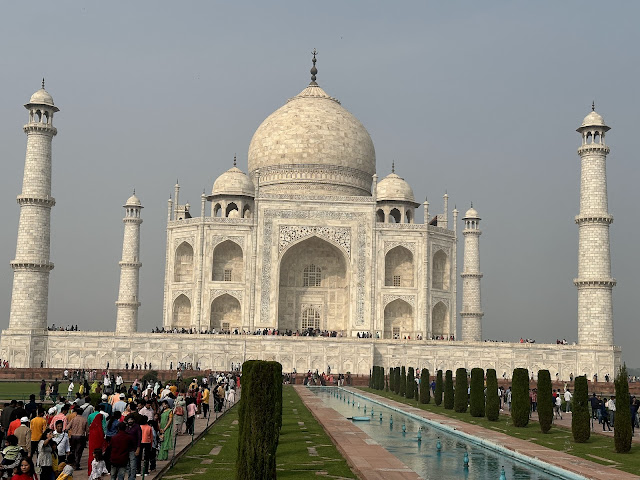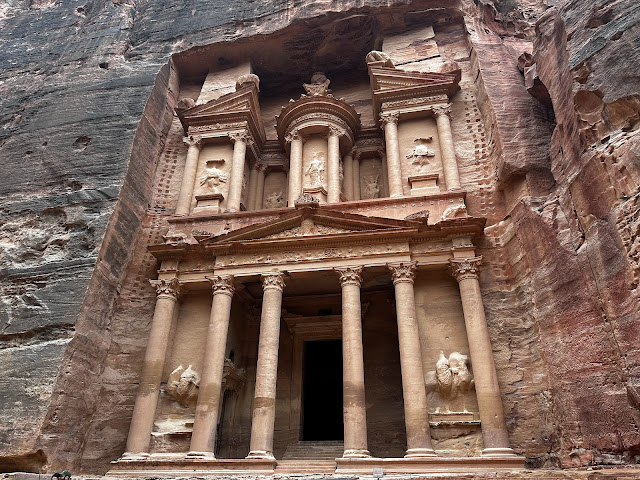Commissioned by the Mughal
emperor Shah Jahan (who was the emperor of Hindustan from 1628 CE to 1658 CE), to
house the tomb of his wife Mumtaz Mahal (who died of postpartum hemorrhage in
1631 CE), the Taj Mahal is a white marble mausoleum which sits on the
right bank of the river Yamuna, in the city of Agra, Uttar Pradesh, India.
 |
| The Taj Mahal |
Covering an area of 42 acres, and displaying
traditional Indo-Islamic and Mughal architecture, the overall complex which
includes the mausoleum, a mosque, a guest house and gardens was constructed
over a period of 22 years from 1631 CE to 1653 CE, under the guidance of chief
Mughal architect and engineer Ustad Ahmad Lahori (1580 CE – 1649 CE). The
mausoleum was constructed using white marble, decorated with semi-precious
stones whereas the other buildings within the complex were constructed using
red sandstone. |
| The white marble mausoleum which sits at the center of the complex |
The white marble mausoleum which sits
at the center of the complex, stands on a 20-foot-high square pedestal. It has four
identical sides with arch-shaped doorways and is topped by a large onion shaped
dome and a finial. The main dome is surrounded by four smaller domes placed at
its corners. Four minarets (towers) each standing at more than 130 feet in
height stand at each corner of the mausoleum. They were constructed slightly
oriented towards the outside of the pedestal on which the mausoleum sits, to ensure
that they would fall away from the mausoleum, in the event of a collapse. The
exterior of the building is decorated with relief art embellished with precious
and semi-precious stones.
 |
The mausoleum is topped by a large onion shaped dome and a finial. Four minarets (towers) slightly oriented away from the mausoleum stands at each of the four corners
|
 |
One of the minarets surrounding the mausoleum
|
 |
The walls of the mausoleum
|
 |
| The main gateway to the complex |
 |
The western building of the complex which is a mosque facing the mausoleum
|
In 1658 CE, Shah Jahan was
deposed by Muhi al-Din Muhammad (commonly known as Aurangzeb) and put under
house arrest at the Agra Fort from where he could see the Taj Mahal. Upon Shah
Jahan’s death in 1666 CE, Aurangzeb buried his remains in the mausoleum at Taj
Mahal, next to the remains of Mumtaz Mahal. Today, the main chamber of the
mausoleum houses fake (replica) sarcophagi of Shah Jahan and Mumtaz Mahal,
whereas the actual sarcophagi is placed at the lower level.
 |
The view of the main entrance to the complex, from the mausoleum
|
Inscribed as a UNESCO World
Heritage Site in 1983 CE, the Taj Mahal was declared as one of the “New Seven
Wonders of the World” in 2007 CE.













Comments
Post a Comment